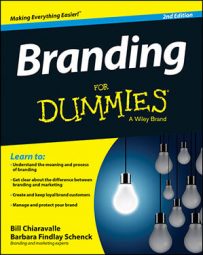The best brand owners make sure that salespeople are steeped in brand culture and armed with tools and scripts that help them share and inspire belief in the brand promise.
For example, Victoria’s Secret sells underwear, but salespeople know that what people are really buying is the idea of sexy romance. Harley Davidson sells motorcycles, but people are really buying association with an independent and rebellious spirit.
Even more than your product, it’s your brand promise that inspires your customer’s purchase decision.
Develop and share brand testimonials, endorsements, and reviews
At the moment of purchase decision, customers need a final hit of inspiration and reassurance that the brand’s offering will deliver as promised. To underscore that a branded product is as good as it’s touted to be, amass positive reviews, testimonials, and endorsements.
Personal testimonials
When obtaining and presenting customer testimonials, follow these tips:
Wait until purchase transactions are completed before asking a satisfied buyer if he or she would say a few words on behalf of your brand.
Encourage frank comments. Even if the words aren’t suitable for a testimonial, they’ll be valuable as you refine your offering and brand experience.
Whether customers speak or write their comments, ask them to focus on the aspect of their experience that they found most compelling.
Ask customers to describe details about their experiences.
Obtain written permission to use the testimonial. Then identify the praise with at least the customer’s first name, hometown, title, and business affiliation if possible and appropriate.
When dealing with customer testimonials, avoid these mistakes:
Never offer cash, product, or favors in return for customer testimonials.
Don’t invent testimonials. They’re likely to sound phony (which they are), and the practice is unethical and sometimes illegal.
Don’t prompt customers. Let them speak freely. You want to collect genuine opinions about the experience of dealing with your organization.
Celebrity endorsements
Celebrity endorsements link star-powered statements of support with brands that somehow match up with the celebrity’s personality and reputation. Usually celebrity endorsements are purchased with cash, product, or stock options.
Consider these points when using celebrities in your brand-building program:
The most credible endorsements convince people that a respected personality uses and benefits from your offering.
The best celebrity representatives align perfectly with your brand image and actually use and support your offerings.
Celebrity endorsements are worthy of legal contracts that define the relationship, the compensation, and what happens should the celebrity’s integrity be damaged by scandal.
Expert endorsements
When experts test, evaluate, and offer positive opinions on products, the endorsements are valuable in developing consumer confidence as long as you follow a few precautions:
The expert must have clear and well-recognized qualifications.
The expert must conduct a product test that conforms to testing standards in your industry. If the test proves that your offering is superior to a competitor’s offering, keep records that support the claim.
The expert must have no relationship with your business, or if a relationship exists, you must describe the relationship in all materials that reference the test.
Organization endorsements
An organization endorsement is a seal of approval from a reputable organization. The Good Housekeeping Seal is a well-known example.
Feature endorsements only from actual, independent organizations that have credibility with your target audience, never from organizations created solely for use in your marketing program. Always check with the organization about how you may use the endorsement and what restrictions apply.
Customer reviews
Customers post reviews for all kinds of products and services at review sites like Yelp, TripAdvisor, CitySearch, and other networks. At many sites, the difference between a four-star or four-and-a-half-star rating can cause dramatic swings in customer decisions.
Nearly every business benefits from positive reviews and is susceptible to damage from bad reviews. Don’t leave it to chance. Claim presence for your business on the review sites prospective customers are likely to check out. Encourage customers to post good words. And keep your cool but double your efforts when an occasional bad review shows up.
Spreading the good word
Gain mileage out of good words by presenting them in the following ways:
Provide testimonials and endorsements in sales presentations.
Include accolades in sales letters and literature.
Feature testimonials on your website and social-media pages.
Intercepting and overcoming objections
When customers share concerns or objections with your company’s representatives, at the very least they’re involved in the sales conversation and, at the most, they’re providing input that allows your company to clarify misunderstandings and overcome buying obstacles.
Most objections stem from one of three areas of concern.
Lack of trust in your brand: Here’s where testimonials and endorsements can come to the rescue.
Preference for a competing brand: Be ready with a recap of the benefits and value your brand delivers in order to present a positive comparison without taking any digs at competitors.
Concern over your offer: Probe the concern and avoid jumping to the conclusion that price is the issue. Often concerns have as much to do with questions about ease of use, appropriateness of the offering, perceived risk in dealing with a new product or brand, or even lack of authority to make the purchase.
Price concerns: Demonstrate worth, present product value, show cost/value ratios, and show cost- or time-saving potential. Also provide purchase options — from trial offers to bulk discounts to special terms or installment plans — to address price barriers.
Time concerns: Demonstrate ease of use, installation, product adoption, training, or other time concerns.
Risk concerns: Demonstrate ease of use and make trial offers, no-risk guarantees, or service assurances to minimize perceived risk. Also, present testimonials, endorsements, and case studies that replace risk concerns with product assurances.
In addition to dealing positively with concerns, log concerns so when it’s time to revitalize your brand, you know the kinds of issues to address.

